Timekettle M3 Translator Earbuds review: the world at your eartips?
Real-time language translation. Is it really possible?

Whether you’re an explorer who yearns to discover new cultures and meet new people, or just want to understand what all the different variations of crisps found in overseas supermarkets are, translation tech has made foreign travel easier than ever. But there’s a difference between embracing jamón flavoured Lay’s and holding a conversation with the locals. Enter the Timekettle M3 Translator Earbuds, a potentially border-traversing pair of true wireless earphones.
Stick one in your ear, says Timekettle, and you can talk with those who speak an entirely different language to yours. It’s not a new concept, with brands like Vfeel, Waverly Labs and ASHATA all offering translator buds in some variation. Then, of course, there’s Google. Do these do things differently?
Set-up, design & comfort: function, not fashion
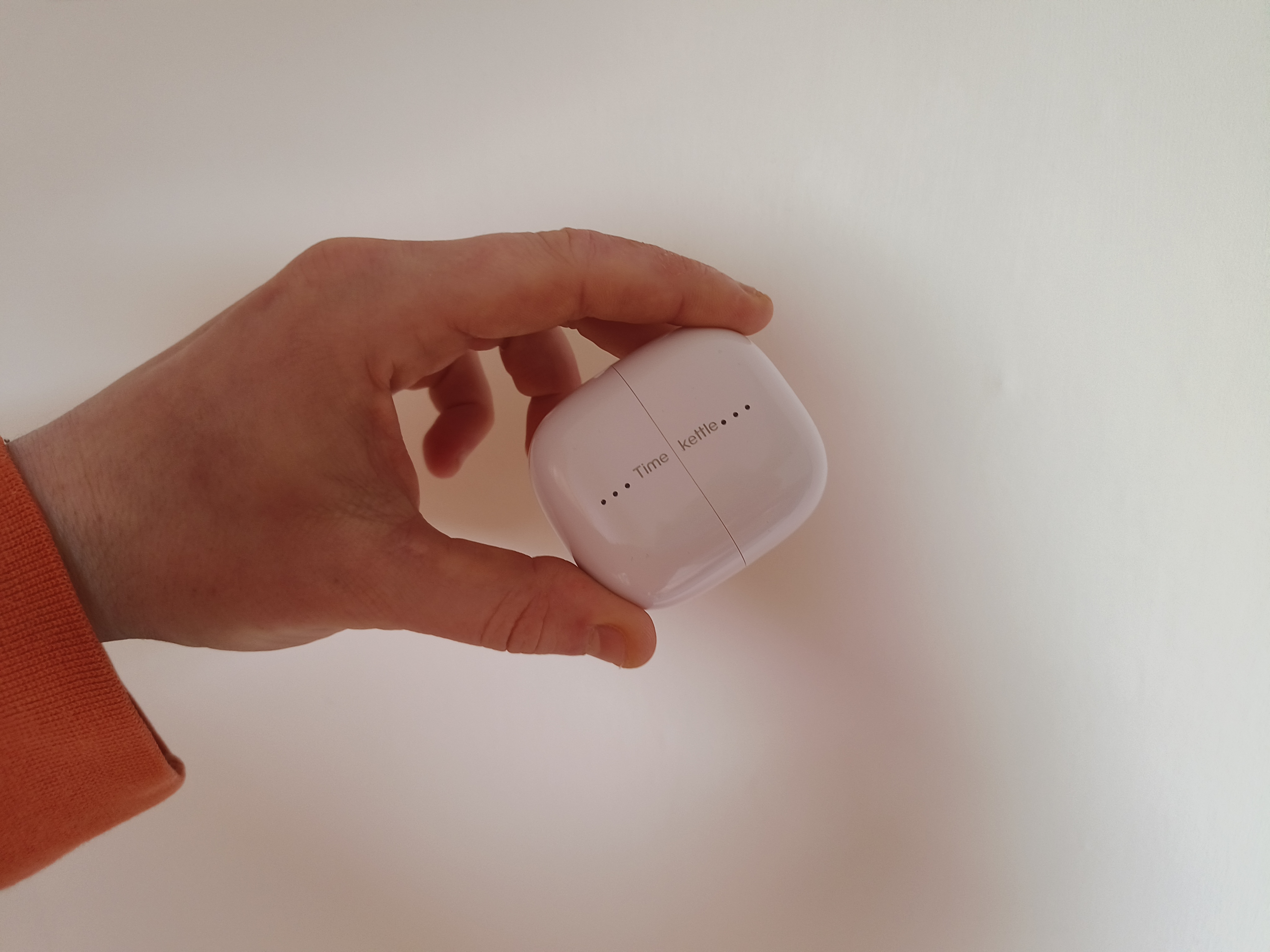
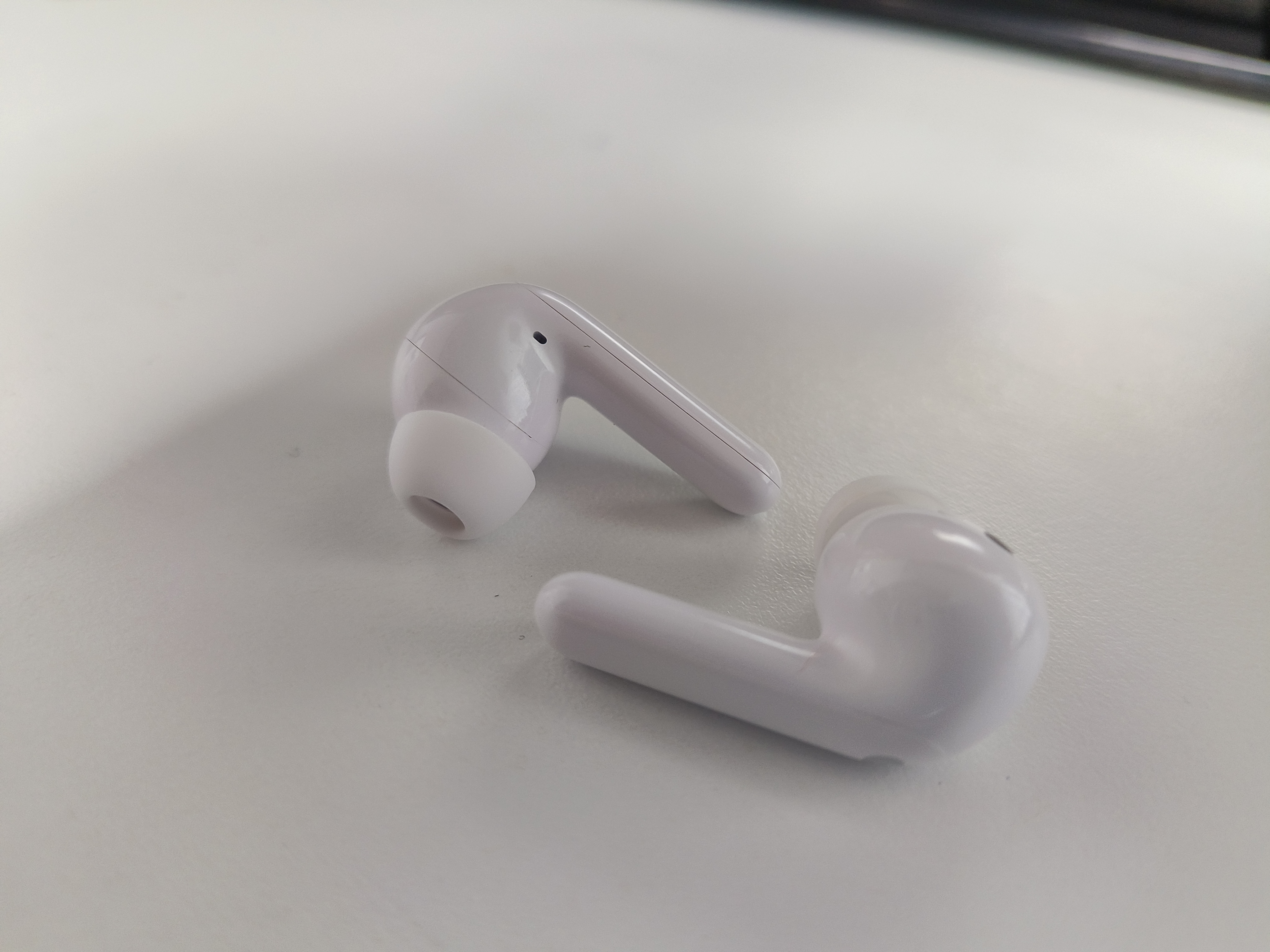
Timekettle says its earbuds are primarily intended for the boardroom and for in-person work meetings (remember those?). You connect to the Timekettle app via Bluetooth, each person pops in a bud, and after a few steps its tech will help you bypass the language barrier.
The buds resemble Apple AirPods crossed with a balloon animal. There’s a slim microphone stem and a spherical head at the top. It’s safe to say that the M3 Translator Earbuds are designed for function, not fashion. A rechargeable case fits snuggly in the palm of you hand though, and has a comfortable weight to it. They’re well protected and stay rattle-free in your pocket.
Comfort-wise, the earbuds are unobtrusive, but not particularly moulded to your ears. The two extra pairs of silicone tips add some tailored comfort for those with smaller or larger ear canals, but the rigid material offers little flexibility.
Features: Parles-tu anglais?
The M3 Translator Earbuds support up to 40 languages, including Vietnamese, Dutch, Catalan, Hindi, Hungarian and more. It also accommodates ‘accents’. These aren’t regional within one country – Cockney and Mancunian, for example – but rather to countries that commonly share a language. In English, that ranges from Irish, to Nigerian, Ghanaian and Australian. It caters to Egyptian and Moroccan Arabic speakers, as well as Spanish speaking nations such as Ecuador and Colombia.
But there’s a catch. Accessing languages offline requires you to download an Offline Package of that language. There’s currently 13 languages on offer, costing five ‘fish coins’ each, Timekettle’s personal currency. Five fish coins cost £9.99, 10 for £18.99, and 15 for £27.99, which is on top of the cost of the buds themselves.
For that money, M3 says it delivers tech powered by six language engines – DeepL, Google, Microsoft, iFlytek, AmiVoive and Hoya. This is incorporated into three primary modes – listening mode, touch mode, and speaker mode. Listening Mode connects to your phone via Bluetooth, and through the phone’s microphone, real-time translated speech is beamed to your earbuds. Place your phone down in a meeting where your presence may be needed, but you don’t really have much to say, and you’ll hear the conversation around you in your chosen language. It also serves a purpose when attempting to translate The Simpsons’ ‘Steamed Hams’ sketch from Spanish to English.
The official line is that these buds were developed specifically for face-to-face communication, not skits from beloved TV sitcoms, but we were still impressed with how they performed. The translation was slightly jargoned, but was working with pretty jargoned material. Given the scene is a dinner meeting between two work colleagues, it’s not too far beyond Timekettle’s intended function.
Attempting the same translation using a German dub performs just as well, although the translation sometimes goes a little haywire at times. Delays in translation vary from a couple of seconds up to 15 seconds, and seems to be based on how long one person is speaking before being interrupted. That ‘person’ being Principal Skinner, it’s not entirely representative.
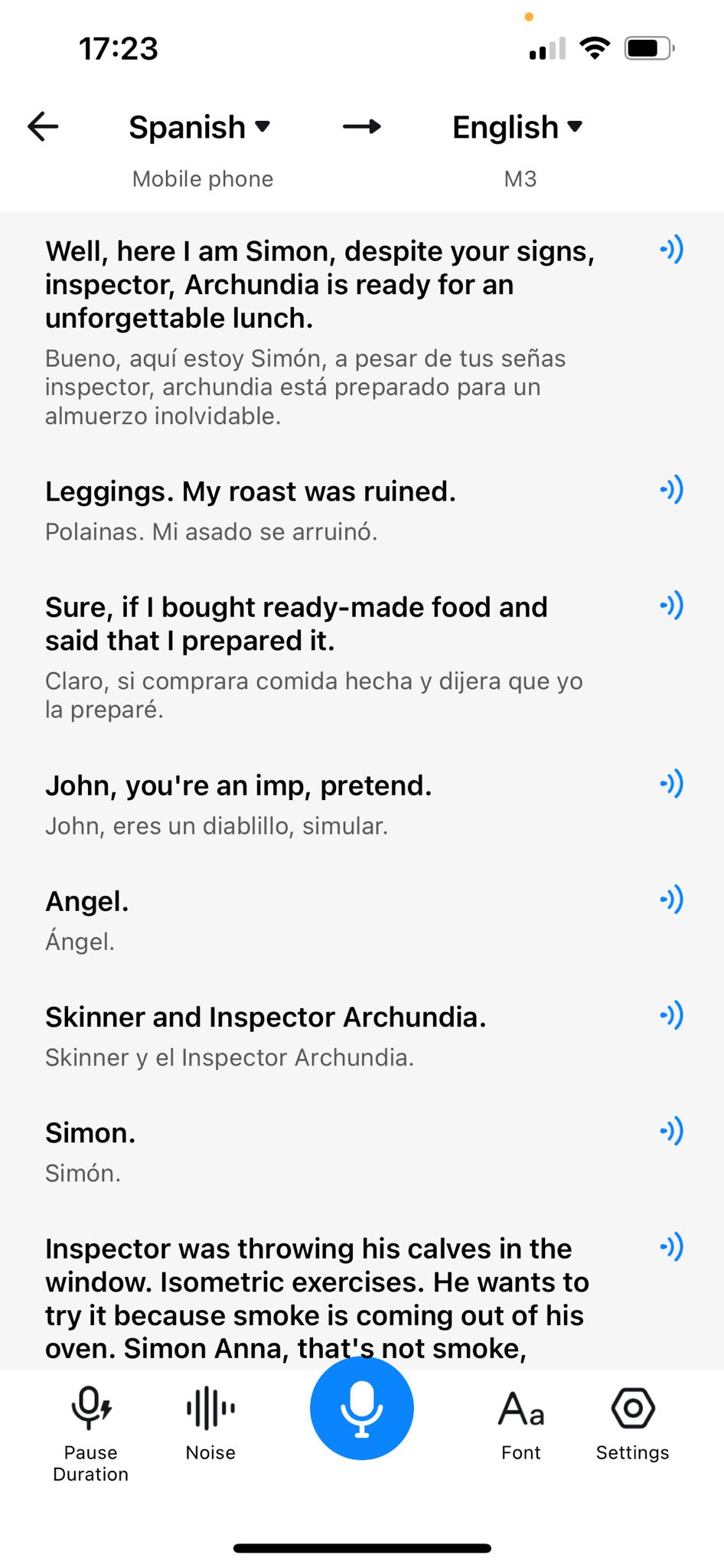
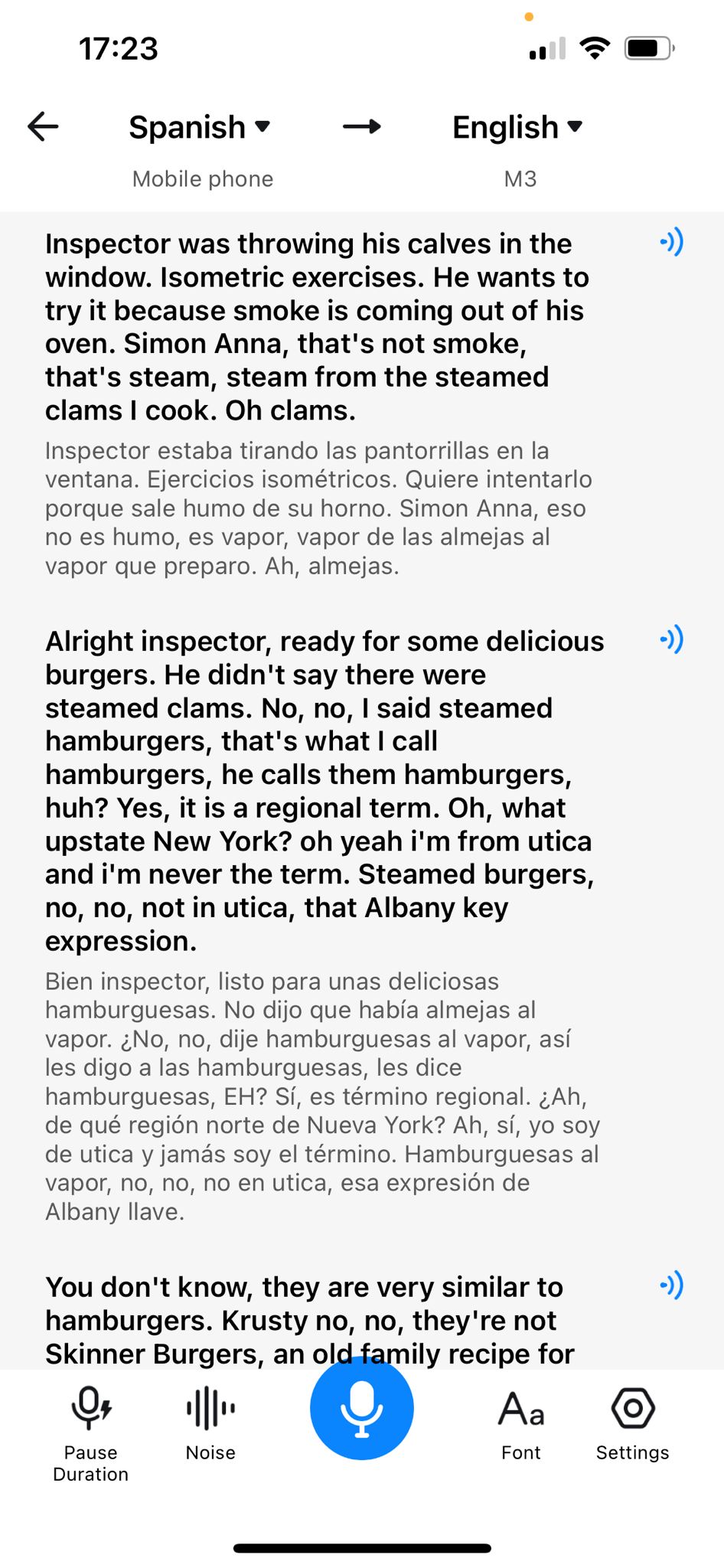
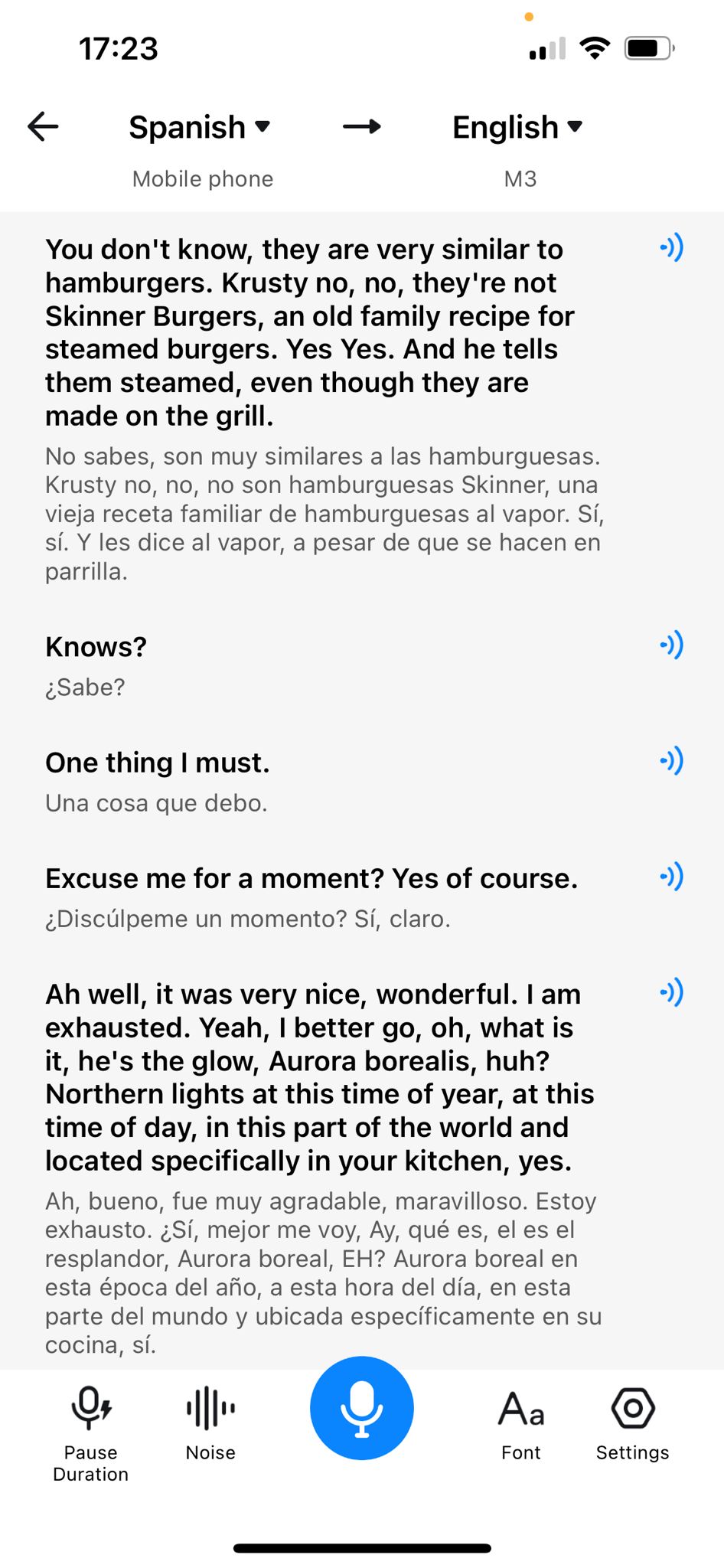
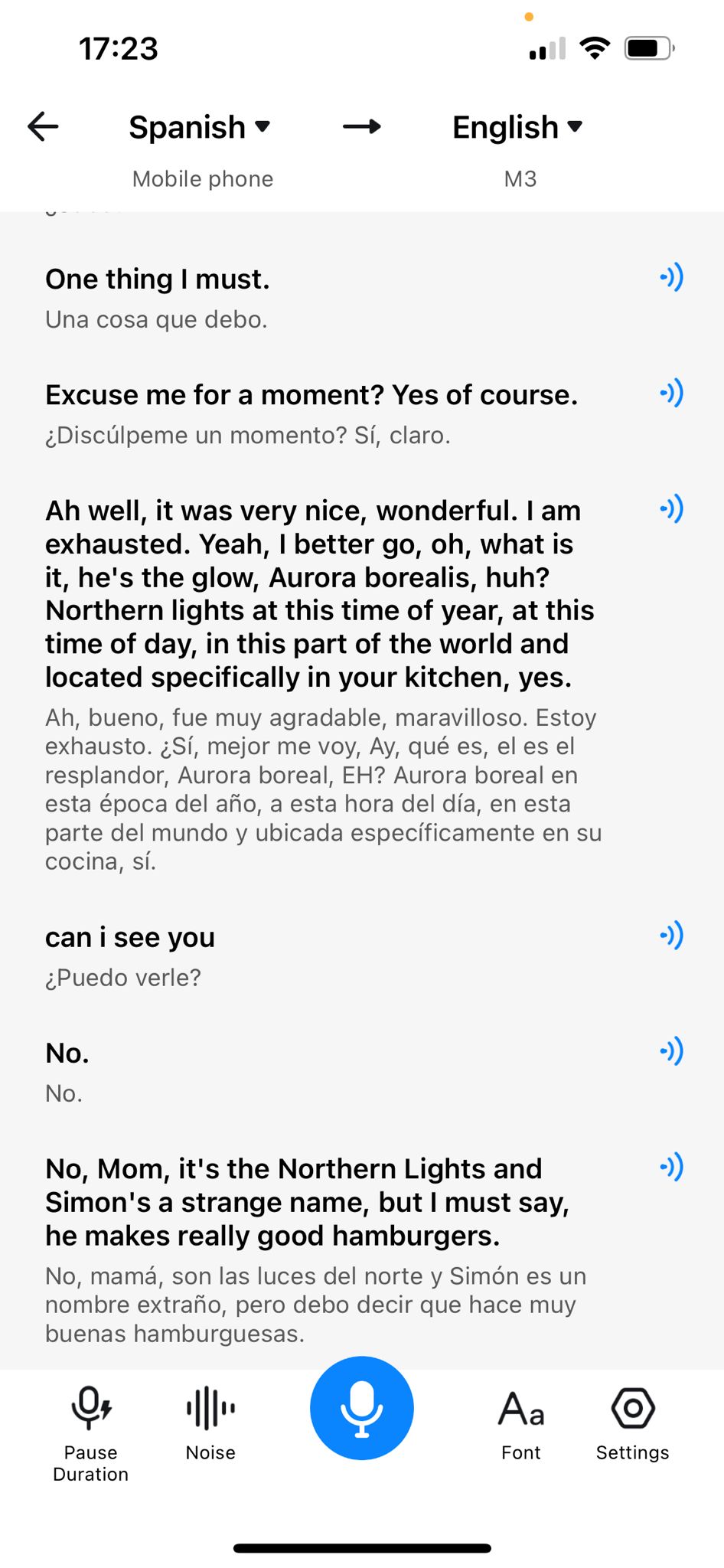
The listening mode continued to perform well with some YouTube monologues in French, German and Korean. There are some quirks that are, well, lost in translation, but being able to follow conversation is (almost) as simple as popping in a pair of earbuds.
It might make travelling a little easier, but we’re dubious. We can’t exactly imagine being greeted at an off-the-beaten-track restaurant, only to then plug in a set of earbuds and navigate to the app before uttering our first ‘bonjour’. Google Translate is already a digital Swiss army knife when finding your way around a new city, even if it’s more obtrusive to shove your phone in someone’s face for a translation. There’s greater opportunity when it comes to business. We particularly see it working well in cash strapped charity and humanitarian sectors, particularly those working with immigrant and refugee communities.
Touch mode allows two people to wear one earbud each to speak face-to-face. That means sharing the same earbud with every new person you meet, which isn’t especially hygienic. Timekettle doesn’t include any wipes, liquid or disinfectant in the box, and there’s no info on how to clean them in the instruction manual. While we personally aren’t fans of sharing ‘buds, others might not share our concerns.
That said, it serves its intended purpose well. We could converse with French and German speakers and follow conversations. There are a few sentences that need repeating, and a couple that we gave up on altogether, which might be a little awkward in real life, but it’ll cope for the most part.
Finally, Speaker mode is really for the basics of getting by in a foreign language. The earbuds offer two-way translation for simple queries and answers. Speak into the earbud in your own language, and it will play out your phone in another chosen language. This doesn’t steer too far from existing software, like Google Translate for your phone. Again, speaker mode works well, but Google Translate is better.
Sound and noise cancelling: helps in a pinch
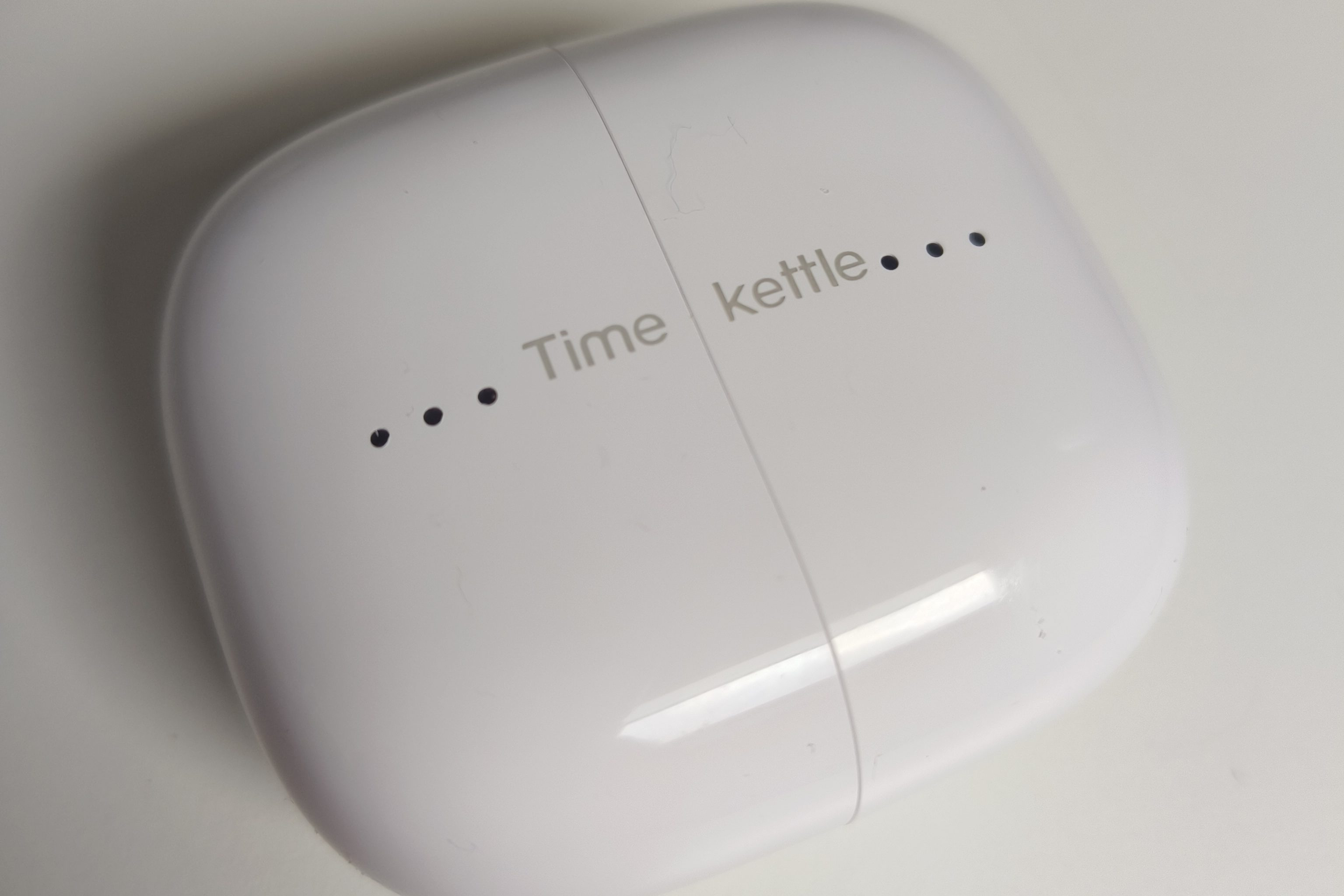

Audio quality and noise cancellation aren’t exactly the M3 Earbuds’ priority. Still, they double as a set of music-playing buds with ANC, and can use the built-in microphone for taking incoming calls and waking your voice assistant.
We certainly wouldn’t call the sound anything special. Frequencies seem to be concentrated to the higher end of the spectrum, which makes for crisp hi-hats but not so much bass power. Speech is clear, which is to be expected for a translator bud, but the Timekettle app offers no option to tailor EQ for podcasts or music.
The Noise cancelling is also almost too active in quieter environments, with no adaptive mode to dial down the distracting hissing sound as it does its thing. They’ll suffice if you’ve forgotten your ‘proper’ headphones on the morning commute, but expect a quieter, rather than properly silent, experience.
Timekettle M3 Translator Earbuds verdict

Sometimes, the M3 Translator Earbuds feel like you’ve acquired a language cheat code, and there are moments when you’ll be genuinely taken aback with its translation abilities. They are rarely perfect though, and require some patience in use. There’s also a natural disconnect when conversing through tech, though one that’s not too dissimilar to speaking via a human translator.
Is it like being granted the power to speak every language on Earth? Not quite, but it’s exciting to see how the tech will progress.
Stuff Says…
A fascinating and promising invention, but one that needs work before it’ll replace your phrase book.
Good Stuff
When it works, it works well
Easy to navigate app
Bad Stuff
Tech simply not there yet
Comfort
Additional costs to unlock content


